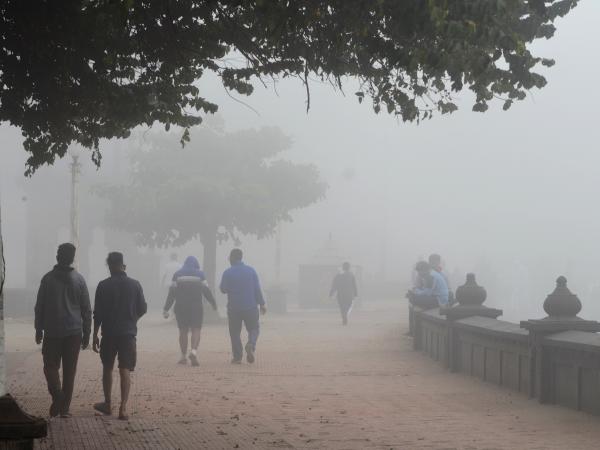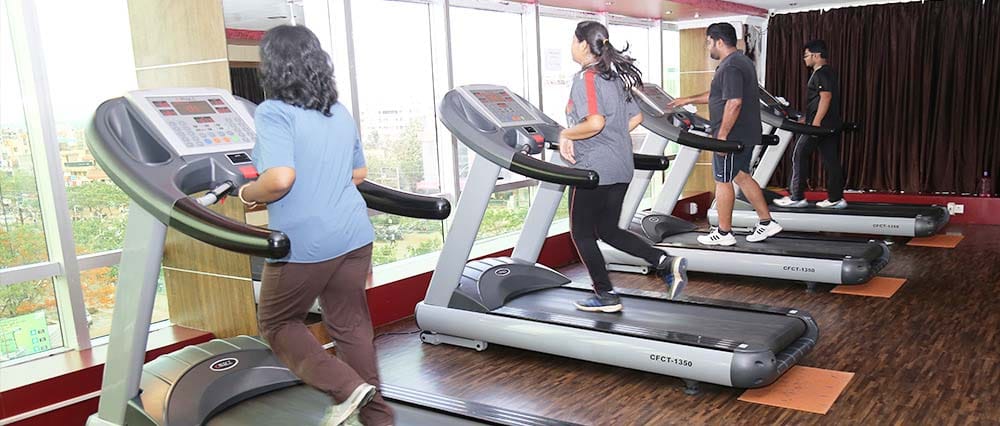Bhubaneswar, Sept. 3: More than 59 per cent of the residents of Bhubaneswar, Odisha’s capital with a population of more than one million, are not physically active while only 16 per cent of the population practiced yoga, a recent study has revealed.

“The physical activity pattern among the city residents has been found to be very poor with 59.2 per cent of the population reporting that they were not active physically and didn’t have any intention of being more active in the future,” the study, the first of its kind in Odisha, said.
The findings of the study, conducted by the Community Medicine department of the Institute of Medical Sciences and SUM Hospital— faculty of medical sciences of SOA Deemed to be University, and funded by the public sector Odisha Mining Corporation (OMC), said even walking for ten minutes or more was reported by less than one-third of the studied population.
“Around 10 per cent of the people interviewed reported that they suffered from Non-Communicable Diseases (NCD) like diabetes, high blood pressure or cardio vascular disease,” Prof. E.Venkata Rao, who headed the study, said.
The study found that only 16 per cent of the people were practicing yoga and most of them were inspired by watching it on television, Prof. Rao said.
The study, he said, was intended to explore how the urban community was placed with regard to physical activity and the government policies concerning the same. It was also unique in the sense that it tried to find out the prevalence of yoga as a physical activity modality.

The other members of the study group included Dr. Satyajit Mohanty, Dr. Sandeep Kumar Panigrahi and Dr. Jyoti Ranjan Sahoo, all from the department of Community Medicine of IMS and SUM Hospital.
According to World Health Organisation, physical inactivity was one of the major risk factors for the rapidly escalating non-communicable diseases (NCDs) with an increase in healthcare costs. NCDs such as diabetes, high blood pressure, heart diseases, cancer etc accounted for more than 36 million deaths globally each year. The mortality affected countries like India with large low and middle income groups where nearly 80 per cent of all NCD deaths (around 29 million) occurred, Prof. Rao said.
“These NCDs account for nearly 50 per cent of all deaths in India though largely non-communicable diseases are preventable if the risk factors involved in it are reigned in. In this context, physical activity is a very important factor for the prevention of NCDs,” he said.
“Physical inactivity is found to be the fourth leading cause of global mortality and is among the top 10 leading causes of death and disability. A study has revealed that 54 per cent of the Indians were not meeting the recommended physical activity standards. The urban community is considered to be more physically inactive than its rural counterpart,” he said.
The research, he pointed out, brought into light three issues. First, the need for formulation of an appropriate national physical activity plan to address physical activity promotion. Secondly, the doctors needed to be trained more on physical activity prescription and third, the most important part was on the individual front.
“Every individual must try to accumulate at least 150 minutes of moderate to vigorous exercise in a week with not more than two successive days of exercise holiday,” Prof. Rao said each year. The mortality affected countries like India with large low and middle income groups where nearly 80 per cent of all NCD deaths (around 29 million) occurred, Prof. Rao said.
“These NCDs account for nearly 50 per cent of all deaths in India though largely non-communicable diseases are preventable if the risk factors involved in it are reigned in. In this context, physical activity is a very important factor for the prevention of NCDs,” he said.
“Physical inactivity is found to be the fourth leading cause of global mortality and is among the top 10 leading causes of death and disability. A study has revealed that 54 per cent of the Indians were not meeting the recommended physical activity standards. The urban community is considered to be more physically inactive than its rural counterpart,” he said.
The research, he pointed out, brought into light three issues. First, the need for formulation of an appropriate national physical activity plan to address physical activity promotion. Secondly, the doctors needed to be trained more on physical activity prescription and third, the most important part was on the individual front.
“Every individual must try to accumulate at least 150 minutes of moderate to vigorous exercise in a week with not more than two successive days of exercise holiday,” Prof. Rao said.

